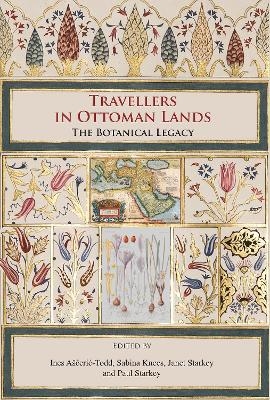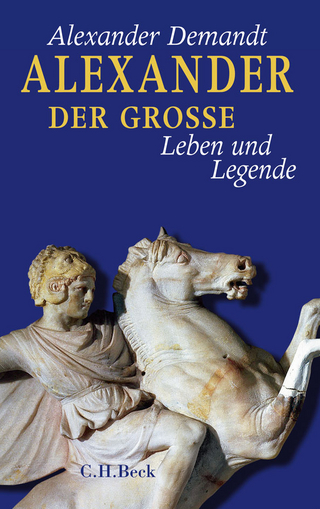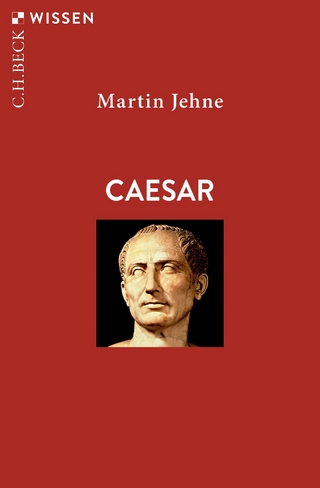
Travellers in Ottoman Lands
Archaeopress Archaeology (Verlag)
978-1-78491-915-3 (ISBN)
DR INES AŠČERIĆ-TODD is a Teaching Fellow in Islamic and Middle Eastern Studies at the University of Edinburgh. Her research interests include social and cultural history of the Middle East and the Ottoman Empire, Sufism and dervish orders. She is the author of Dervishes and Islam in Bosnia: Sufi Dimensions to the Formation of Bosnian Muslim Society, in the Brill series ‘The Ottoman Empire and its Heritage’ (Leiden & Boston: Brill, 2015). | DR SABINA KNEES has edited the Flora of the Arabian Peninsula and Socotra, since 2005. Before joining The Centre for Middle Eastern Plants (CMEP) at the Royal Botanic Garden Edinburgh (RBGE) in 2005, Sabina was a principal editor on the European Garden Flora, and a Stanley Smith Research Fellow based at the RBGE. Sabina is a member of the Horticultural Taxonomy Group (Hortax), the IUCN SSC Arabian Plant Specialist Group and the Executive Committee of the Friends of Socotra. | DR JANET STARKEY has edited the Proceedings of the Seminar for Arabian Studies since 2007. A former lecturer at Durham University, she has published extensively on travellers in the Middle East. Her most recent book, The Scottish Enlightenment Abroad: the Russells of Braidshaw in Aleppo and on the Coast of Coromandel (Leiden & Boston: Brill), was published in March 2018. | PROFESSOR PAUL STARKEY, a specialist in Arabic literature and culture, is Emeritus Professor at Durham University and is currently Vice-President of the British Society for Middle Eastern Studies (BRISMES) and Chairman of the Banipal Trust for Arab Literature. His translation of The Book of the Sultan’s Seal by Youssef Rakha won the 2015 Saif Ghobash Banipal Prize for Arabic Literary Translation, and his translation of The Shell by Mustafa Khalifa won a Sheikh Hamad Award for Translation and International Understanding in 2017.
Foreword – by Semih Lütfü Turgut, Turkish Consul General in Edinburgh ;
Preface – by Sabina Knees ;
Introduction to Travellers in Ottoman Lands: The Botanical Legacy – by Paul Starkey ;
Acknowledgements – by Paul Starkey ;
THE OTTOMAN EMPIRE ;
1 The Ottoman Empire: an introduction to its history and heritage – by Ines Aščerić-Todd ;
THE OTTOMAN GARDEN ;
2 Presenting and re-presenting Ottoman imperial gardens in manuscript illustrations: the case of the Oxford Dilsūznāmah, dated AH 860/AD 1455–1456, Edirne – by Susan Scollay ;
3 Ottoman fruit cultivation as reflected in Evliya Çelebi’s Book of Travels 43 ;
Priscilla Mary Işın ;
4 Gardens of Istanbul in Persian hajj travelogues (Güllü Yıldız) [Open Access: Download] ;
5 The public space of the Bakewell Ottoman Garden – by Radha Dalal ;
BOTANIST-TRAVELLERS ;
6 Dioscorides’ legacy: a classical precursor to travellers in Ottoman lands (Alison Denham) [Open Access: Download] ;
7 Botanical explorations by Frederik Hasselquist (1749–1752) and Pehr Forsskål (1761–1763): Linné’s apostles in the Holy Land – by Tobias Mörike ;
8 From Ottoman Aleppo to Edinburgh: the botanical legacies of Adam Freer MD and his colleagues – by Janet Starkey ;
9 The botanist Carl Haussknecht (1838–1903) in the Ottoman Empire and Persia (1865 and 1866–1869): a biographical sketch and itinerary of his expeditions – by Frank H. Hellwig & Kristin Victor ;
10 In honour of Professor Asuman Baytop (1920–2015): a tribute | On Georges Vincent Aznavour, the last Ottoman plant collector and his herbarium held in the Robert College (Istanbul), Turkey – by Necmi Aksoy ;
11 Violet Dickson, Umm Saud, the last grande dame of Arabia – by Irene Linning† ;
BULBS AND CONIFERS ;
12 Bulbs of the Holy Land: diversity, conservation, and cultivation – by Ori Fragman-Sapir ;
13 George Maw (1832–1912): his Crocus monograph, travels, and correspondents from the Ottoman Empire – by Alison Rix ;
14 Decline of the conifers in former Ottoman lands – by Martin Gardner & Sabina Knees ;
15 The cedars of Lebanon in literature and art – by Paul Starkey ;
ART AND BOTANY ;
16 Botanical art in Turkey from past to present – by Gülnur Ekşi ;
17 The interpretation of Ottoman garden culture through miniatures – by Gürsan Ergil ;
18 Richly decorated textiles and Ottoman court dress – by Jennifer Scarce ;
19 Taking ‘stalk’ of Turkey red in Ottoman flora, fabric, and fibre – by Lara Mehling ;
20 Roses, carnations, and ‘Prophet’s eggs’: Turkish needle lace flowers between decoration and non-verbal communication – by Gérard J. Maizou & Kathrin Müller
| Erscheinungsdatum | 31.07.2018 |
|---|---|
| Zusatzinfo | 2 maps, 7 tables, 167 figures (139 plates in colour) |
| Verlagsort | Oxford |
| Sprache | englisch |
| Maße | 175 x 245 mm |
| Gewicht | 957 g |
| Themenwelt | Sachbuch/Ratgeber ► Geschichte / Politik ► Vor- und Frühgeschichte / Antike |
| Reisen ► Reiseberichte | |
| Geisteswissenschaften ► Archäologie | |
| Geisteswissenschaften ► Geschichte ► Regional- / Ländergeschichte | |
| Naturwissenschaften ► Biologie ► Botanik | |
| ISBN-10 | 1-78491-915-2 / 1784919152 |
| ISBN-13 | 978-1-78491-915-3 / 9781784919153 |
| Zustand | Neuware |
| Haben Sie eine Frage zum Produkt? |
aus dem Bereich


